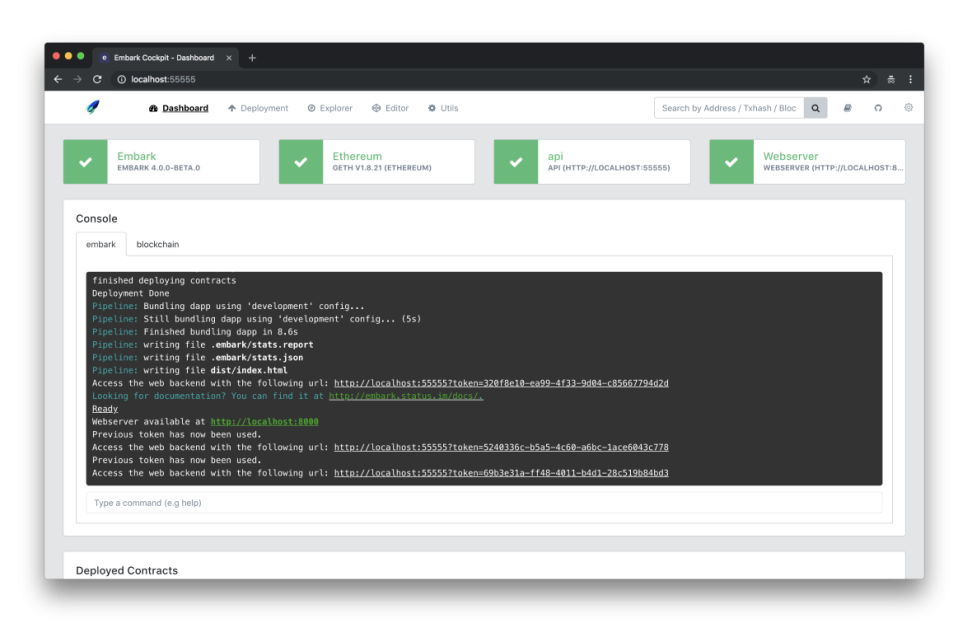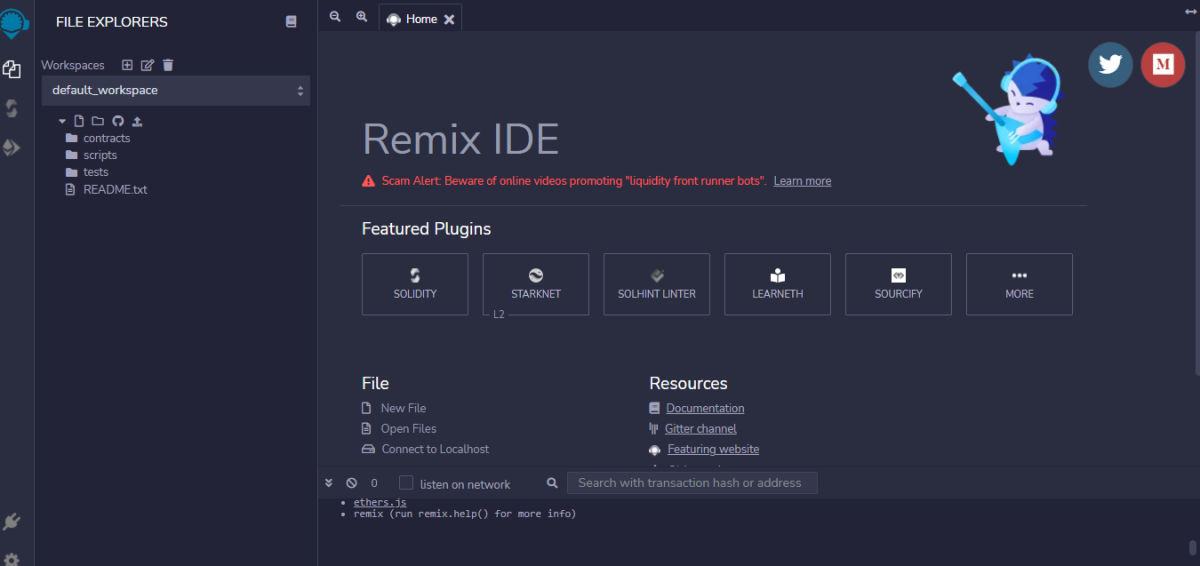Geekflare is supported by our audience. We may earn affiliate commissions from buying links on this site.
The blockchain is becoming one of the most transformative technologies of the past decade and is expected to transform many industries soon.
A blockchain is an open ledger that records data and transactions and cannot be changed or removed once uploaded. All transactions can be stored publicly and securely on the ledger with blockchain. It allows people to maintain a single source of truth, which gives them the power to make better decisions.
Developers are incredibly excited about this innovation because they can use blockchain to create decentralized applications (dApps) without relying on centralized intermediaries like Google or Amazon.
In addition, since there are no centralized intermediaries, developers need not worry about security issues or data breaches. Developers can also use smart contracts to ensure their app is completed according to specifications. The blockchain is a trustless system; you don’t have to worry about data being hacked or stolen by anyone else if you have the technology in place.

Blockchain Development
The first step in a blockchain project is to select the appropriate technology stack. It would be best to decide if you can use the blockchain for a public, private, or consortium network. It will help you identify the appropriate development tools and resources for your project.
The next step is to choose your development framework. You can choose from multiple options like Corda, Ethereum, or Hyperledger Fabric, with the option of launching an app on their respective networks. Once you’ve decided which technology stack and framework you’ll be using, it’s time to start developing!
One of the primary benefits of using blockchain is that it offers decentralized data storage and redundancy. It means that even if one node goes down, the other nodes can still access the data.
Furthermore, blockchain offers decentralized authentication and authorization because there’s no need for third-party authentication systems like OAuth or OpenID Connect (OIDC). These factors allow developers to create user interfaces without relying on complex backend code that might not function well when users access them from different locations worldwide.
This article is meant to guide developers who want to pursue blockchain and learn more about this exciting technology. Here are some of the top tools that help beginner blockchain developers get started and keep up with the latest advancements in the industry.
MetaMask is a Chrome web browser extension that can interact with dApps. It is an open-source, decentralized wallet that allows users to send and receive digital assets. MetaMask has recently become the most popular dApp browser for developers because it is easy to use and highly functional.
MetaMask isn’t only a simple dApp browser, but it also has other features like identity management, sign-in and sign-up, and more.
For example, MetaMask will automatically import your account from Ethereum (if you have an Ethereum wallet) when you first open the app. It makes it easier for people who already have an Ethereum wallet to move their digital assets into their new accounts without any hassle.
With MetaMask, you cannot serve Ether or other ERC-20 tokens available on this network but also communicate with your decentralized applications. In addition, it allows you to run it through your web browser! If you are a developer, these tools for analyzing blockchains will not require any live Ethereum node to operate. Thus, interfacing using the Ethereum network is an easy task.
Embark
In case you are searching for a blockchain development framework that you can use for your applications on decentralized networks, Embark can assist you. This blockchain management tool can help users manage their dApps and provide you with all the tools needed to build and launch a brand-new version.

You could create an independent HTML5 app that uses the features of decentralization. In addition, you can make new smart contracts and then deploy them through their JS code. The most appealing aspect of this kind of tool for managing blockchains is that they monitor for any changes that you make to the contracts. If they do, they will change contracts promptly and then update software that is decentralized to it.
The ability to migrate smart contracts is an advantage of this software. To work on it, users could utilize any standard programming language, such as Meteor, Angular, React, and many others.
Web3j
Web3j is a tool created for blockchain by the developers of Java WebSocket API. This helpful library lets developers connect and interact with Ethereum-based decentralized apps (dApps) based on blockchain. Additionally, it supports Generic JSON RPC spec for connecting to either a local or remote Ethereum node.
The benefit of this software is that you don’t need to set up different programming languages or infrastructure to interact with these transactions. Also, you don’t require understanding how consensus works or miners are interfacing with these contracts. If you’re able to code, you’re set to go!
With this, you will accomplish tasks like sending Ether between addresses, writing or reading smart contract information creating smart contracts, and many more.
Because the tool for blockchain operates on JavaScript language, it is possible to use it with any web-based browser. You’ll require an Ethereum node that can connect to the Ethereum network using HTTP to use this type of tool for blockchain technology. You can use the MetaMask extension with Web3.js to connect with the Ethereum network.
Prysm
Prysm can be described as a tool designed for developers to help develop decentralized apps. It also provides a comprehensive guide to building your first decentralized app so that you can start now. A fully-featured client for the Ethereum 2.0 protocol written in Go.
The Prysm project is a Go-based version of the Ethereum 2.0 protocol defined in their official protocol. It comes with a complete beacon node and serves as a validator client that allows being a part of blockchain consensus.
Prysm makes use of the top-of-the-line instruments for the production server as well as interprocess communication. It uses Google’s gRPC libraries, BoltDB, to provide an efficient, permanent key-value storage, key-value stores, and the libp2p library from Protocol Labs for all peer-to-peer networking.
Prysm maintains two permanent branches:
- master: This is the most recent stable version. It’s ideal for most users.
- develop: This branch is intended for development and includes the most recent PRs. Developers must base their PRs on this branch.
Remix Project
Remix Project is a platform for tools for development that employ plugin architecture. It comprises sub-projects such as Remix Plugin Engine, Remix Libraries, and of course, Remix IDE.
The Remix IDE is an open-source desktop and web application. It allows for a quick development process and includes an array of plugins with intuitive user interfaces. The Remix is utilized for the entire course of contract development using Solidity language and is also an educational playground ideal for teaching Ethereum.
Remix libraries function as the component of native plugins for Remix IDE.

Remix IDE is a browser-based Blockchain tool used to facilitate the development and implementation of smart contracts. It is written using Javascript (so it can be used with every modern web browser), Remix can be utilized for writing, testing, and debugging smart contracts created in Solidity. You can use it locally or through the browser. If you go to Remix’s website, you will get a screen that is ready to use:
In addition to having excellent documents, Remix can seamlessly connect to the Ethereum blockchain via Metamask.
Truffle Suite
Truffle can be described as an Ethereum Blockchain framework designed to provide a development environment for developing Ethereum-based apps. It includes an extensive library of libraries that offer customized deployments to write novel smart contracts. Create complicated Ethereum dApps and assist with other complex demands for Blockchain development.
Truffle can automate contract testing with Chai or Mocha. Truffle also allows smart contract development that includes linking to compilation and deployment. It also offers an adjustable build pipeline to perform custom build processes.
Features of Truffle Suite
Lifecycle Management of Smart Contracts: This tool can handle your contract artifacts and supports custom deployments, complicated Ethereum applications, as well as library linking.
Contract Testing: You can check your contracts regularly and make sure that they increase.
Scriptable Migrations and Deployment: It is possible to use this blockchain tool to create simple and easily managed deployment scripts that are aware of your contracts’ changes as time passes. Your app will grow and remain current even into the future.
Management of Network: There is no need to fret about any network artifacts after you’ve started using Truffle. It will also manage them while you focus on dApp development.
Highly Powerful Interactive Console: Interacting on contracts is never so easy. Truffle will provide you with access to a user-friendly interface that will take up your time and allow you to use your contracts to interact.
External Script Runner: Use this blockchain tool to bootstrap all your contracts and operate on the blockchain network without issue.
Summing Up
There are numerous blockchain development platforms available. However, the above tools are most popular.
This article introduced the blockchain concept, explained how it is changing, how we see it and presented the most used Blockchain development tools. We evaluated each platform to determine its features, then reviewed the most common scenarios that use each, and analyzed the consensus algorithms supported and the types of ledgers and cryptocurrencies.
Blockchain can be a complex subject to comprehend, particularly developing blockchain-based apps. The best way to get started is to learn how they function underneath the hood, then develop from there. Keep a watch for more blockchain-related content.
You may now look at some of the best blockchain platforms for finance applications.



